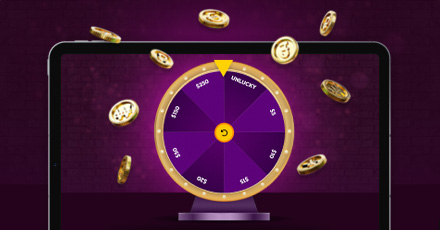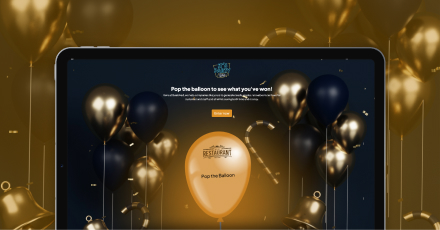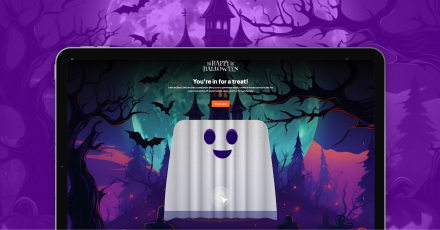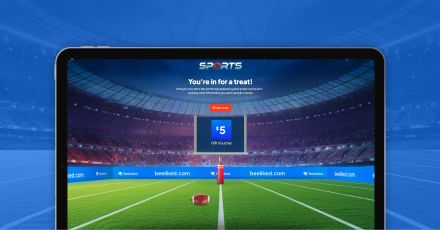The term “employee engagement” was introduced in the 1999 book First Break All the Rules. In summarizing the results of a Gallup employee survey, authors Marcus Buckingham and Curt Coffman summarized what successful companies do differently, debunking traditional management beliefs such as “treat people as you like to be treated” and instead focusing on:
- Finding the right fit for employees
- Focusing on employee strengths
- Defining expectations
- Selecting staff for talent, not just skills
Updated in 2016, the book has proved to be a visionary one. Even though the business landscape has changed greatly in the past two decades, how to improve employee engagement and retention remains the same.
In this piece, our aim is to explore the concept of employee engagement while providing insight into the role it plays in the wider idea of achieving business success. We’ll also cover employee engagement activities, initiatives, and incentives designed to drive employee engagement, including gamification software.
Let’s dive in.
What defines business success?
There are likely as many definitions of business success as there are businesses. But some core tenets always hold true:
- Having a clear strategy
- Setting goals
- Being streamlined and productive
- Hiring the right team
- Being transparent and realistic
- Being versatile and adaptive
At the end of the day, though, no matter what industry you’re in, your business is only as strong as its employees. That’s because it’s your employees who form the team that brings your business strategy and goals to life as they:
- Carry out your mission, such as exceptional customer service.
- They are the lifeblood of an organization, bringing a competitive advantage to the company.
- Drive revenue by reducing costs and boosting sales.
- Influence your customers and act as a reflection of your company culture.
As an employer, you need to understand why your employees are or are not fully engaged with your company’s goals. Hint: The answer lies in much more than salaries, benefits, or promotions.
What is employee engagement?
Let’s start with what employee engagement is not: happiness, satisfaction, or well-being. These three elements are valued by employees, but they say nothing about how invested they are in the company nor how hard they’re willing to work to fulfill its mission. They are surface-level measurements that don’t correspond to productivity or engagement.
Many people also equate employee engagement with employee incentives. It’s true that employee incentives play a role in how happy an employee is. It’s important to recognize that today’s employees require more than paychecks and bonuses to be engaged. Along with careers that afford them plenty of opportunity for personal and professional growth they want:
- Work that has meaning. In fact, nine out of 10 people are willing to earn less to do more meaningful work.
- To work for an organization whose company culture they value more than compensation.
- Leadership focused on leading the company to future success.
Finally, while some companies are rethinking whether to continue and extend the use of a distributed workforce, many employees themselves have discovered during the health crisis that they prefer a hybrid model or a permanent remote environment.
Employee engagement is more than a catchy soundbite. It’s a proven concept that affects every important aspect of your organization, including revenue, profitability, client experience, and employee retention. The more engaged your workforce is, the more successful your company can be.
Why is employee engagement important?
In recent years employee engagement has become a pressing and growing concern for organizations that recognize it’s a key to building a successful business. Here are some numbers driving that concern:
- Worldwide, only 15% of employees say they fully engage with their work, though the number has been slowly improving.
- A majority of employees are at any given time evaluating whether to leave their job.
- Low employee engagement is expensive. Businesses spend, on average, just over $5,100 to hire and onboard new talent.
The 4 Levels of employee engagement
To complicate matters, there are varying levels of employee engagement.
- Highly engaged employees have a strong positive opinion of their workplace. They feel connected to the company they work for and love their job. They plan to remain long-term with the organization and are willing to put in extra effort to help it succeed. Known as “brand advocates,” these employees speak highly of their company to other people and encourage fellow team members to feel and do the same.
- Moderately engaged employees still see their employer in a favorable light, but they’re less likely to believe there are opportunities for improvement. They are less likely to ask for or take on additional responsibilities and tasks and can underperform. They’re not always able to articulate what holds them back from full engagement.
- Narrowly engaged employees feel what can best be described as indifference toward their workplace. They are less motivated and tend only to do what they need to to get by. They’re also likely to have one foot out the door.
- Disengaged employees have negative opinions of their workplace and are completely disconnected from its mission and goals. They lack the commitment to their position and responsibilities, and their negative perceptions often have an impact on fellow employee productivity.
3 Core benefits of engaged employees
Leadership must be willing to discover what employees need to feel engaged and motivated if they want to reap the benefits:
- Increased productivity stems from employees who are encouraged to work to their strengths in order to meet and exceed goals.
- Decreased attrition rates due to employees feeling connected to the present and future.
- Greater innovation through access to the resources employees need to develop and nurture new ideas.
When you invest in improving employee engagement, you’re contributing to your employee’s health, safety, productivity, and retention. It’s a win-win proposal that’s impossible to put a price tag on.
What do employees need to feel engaged?
A recent study found that recognition is a top driver of employee engagement. When employees know they’ll be recognized and rewarded for their efforts, they’re more likely to go above and beyond.
Employee engagement activities and employee engagement initiatives are umbrella terms for incentivizing ways to guide and motivate employees. These methods, including gamification, are designed to take advantage of each employee’s strengths. Employees who primarily use their strengths at work feel less stressed, increasing their productivity while supporting positive engagement with clients and customers.
Workplace gamification
As no two organizations are alike, each has its own employee engagement challenges. One unifying approach to employee engagement has been using workplace gamification to consistently engage with employees and teams to achieve outstanding performance and maintain a company culture where productivity and profitability thrive. Gamification can be used to help employees become fully engaged by encouraging them to be mentally, emotionally, and actively involved in a company’s success. It’s a great way to build a more committed workforce by cultivating employee motivation, setting clear organizational goals, focusing on employee strengths, and giving high-quality feedback.
Unless they’re highly disengaged, most employees want to know how they’re performing. And they want to know their performance matters. Digital motivation via gamification is a great way to breathe new life into employee engagement by tapping into basic human traits such as the drive to compete, improve, win, and be rewarded.
How does gamification work?
Gamification works by sparking engagement amongst all employees, including remote workers. Does it work? One study found that 90 percent of employees who use gamification are more productive. Just over 70 percent of them believe it inspires them to work harder. Done right, gamification can improve productivity and engagement. To get it right, employers must focus on that need to be recognized, not just rewarded. Put another way, a gift card is nice, but status through recognition is more valued.
How to use gamification for employee engagement
There are several ways you can introduce gamification into your overall employee engagement strategy.
- Training and onboarding processes are critical to your organization’s success. Make it more enjoyable and successful by introducing game-based elements into it. Deloitte Consulting was an early adopter of deploying gamification in training with an initiative in 2013. Using elements like leaderboards, missions, and badges, the company was able to motivate more employees to sign up for and complete training courses.
- Enhance job performance. One of the best examples of gamification being used to enhance employee job performance comes from software company Salesforce which used employee engagement software to increase the usage of its complex CRM system by its sales reps.
- Amplify employee communication. Employees crave regular feedback and transparent communication from their employers to do their jobs well. Lack of open and frequent communication can be a major factor in decreased employee engagement. Retail giant Target overcame employee disengagement by introducing game-based elements into how team members approached their jobs. Cashiers rarely got feedback from management and were given a game to play when checking out a customer’s items. They received immediate feedback in the form of green and red lights that blinked to indicate if items were optically scanned.
Employee engagement tips
There are dozens, if not hundreds, of examples to show that, implemented correctly, gamification can play a huge role in boosting employee engagement, enhancing job performance, and improving internal communication. To ensure your employee engagement through gamification efforts succeed, it’s good to keep these tips in mind:
- Whether hitting business targets or bolstering engagement, identify clear goals and objectives regarding what you want to achieve by introducing gamification into the workplace.
- Take the time to listen and understand each employee’s unique needs. What motivates and drives them? Are there common resources that can meet those needs?
- Design programs around the unique skills and motivations of your employees.
- Ensure employees fully understand why gamification is being introduced and their role in making it successful.
- Test the gamification process before releasing a game into the workforce. Analyze what does and doesn’t work and adjust accordingly.
- Constantly measure and gauge employee reactions regarding the process.
BeeLiked employee engagement software
At BeeLiked, we believe an organization’s most important asset is its people. We also understand how important employee engagement can be to your bottom line and how recognition is key to employee well-being and positivity. Most of all, we know that when employees feel what they do matters, their satisfaction and engagement rise, and they’re motivated to improve their current performance.
We offer customizable promotion types that help you empower employees and recognize them for the qualities, behaviors, and values they bring to the workplace while improving productivity and retention.
















